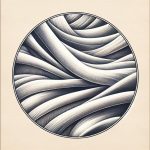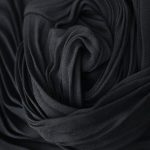When you're in the market for quality poplin, it's essential to know what to look for to ensure you make a wise investment. You'll want to consider factors like fabric weight, weave structure, and fiber types, as each plays a crucial role in the fabric's overall performance and feel. Understanding these elements can significantly impact your selection process, leaving you with a fabric that meets your needs. But before you make any decisions, there are a few more details that could change your perspective completely.
Table of Contents
Key Takeaways
- Evaluate fabric weight: Choose lighter weights for summer, medium for casual wear, and heavier for durability and tailored garments.
- Check weave structure: Opt for a balanced weave for smoothness, durability, and a crisp finish in poplin fabric.
- Consider fiber types: Select cotton for breathability, polyester for durability, or blends for a balance of comfort and resilience.
- Assess color and print quality: Ensure vibrancy and sharpness in prints, checking under different lighting for consistency.
Understanding Poplin Fabric
Poplin fabric, known for its smooth texture and durability, is a popular choice for everything from shirts to home textiles. This tightly woven fabric features a plain weave, which results in a crisp finish that's easy to care for. When you touch poplin, you'll notice its soft, breathable quality, making it ideal for warm-weather clothing.
Originally made from silk, modern poplin typically blends cotton with synthetic fibers, enhancing its resilience while maintaining comfort. When you're shopping for poplin, look for options that highlight their thread count; higher thread counts often equate to a finer texture and increased durability.
You should also consider the fabric's weight and drape when making your choice. A lightweight poplin will feel airy, perfect for blouses or summer dresses, whereas a heavier option might work better for structured garments like tailored shirts.
Additionally, pay attention to the fabric's finish. Some poplins come with a slight sheen, while others have a matte appearance. Each finish can affect the overall look and feel of your garment.
Understanding these key aspects will help you make an informed decision when choosing the right poplin for your needs.
Evaluating Fabric Weight
When selecting poplin, understanding fabric weight is crucial, as it directly influences how the garment will drape and feel against your skin. Fabric weight is typically measured in grams per square meter (GSM) or ounces per square yard.
Lighter weights, around 100-130 GSM, offer a soft and breathable feel, perfect for summer shirts or lightweight dresses. These fabrics tend to flow nicely and are ideal for layering.
On the other hand, medium-weight poplin, ranging from 130-200 GSM, provides a balance between comfort and structure. This weight is versatile and works well for casual wear, office attire, or even skirts and trousers.
Heavier poplin, above 200 GSM, boasts durability and a more structured look, making it suitable for tailored garments or outerwear.
When evaluating fabric weight, consider the purpose of your garment. If you want something flowy and airy, opt for lighter weights. For structured pieces, go for medium to heavy options.
Always check the fabric specifications before making a purchase; it can save you from disappointment and ensure you choose the right poplin for your needs.
Analyzing Weave Structure
Understanding the weave structure of poplin is essential for determining its texture, durability, and overall appearance in your garments. Poplin typically features a balanced weave, which means it has an equal number of warp and weft threads. This creates a smooth, crisp fabric that drapes beautifully and resists wrinkles. When assessing poplin, pay attention to the tightness of the weave; a tighter weave generally indicates a more durable fabric.
Here's a quick reference table to help you analyze different aspects of poplin weave structures:
| Weave Type | Characteristics | Ideal Use |
|---|---|---|
| Plain Weave | Simple, flat, and strong | Shirts, dresses, trousers |
| Twill Weave | Diagonal ribbing, more drape | Skirts, jackets |
| Satin Weave | Smooth, shiny finish | Formal wear, linings |
Considering Fiber Types
Considering the fiber types used in poplin can significantly impact its feel, durability, and suitability for different garments. When you're shopping for poplin, you'll typically encounter a mix of cotton, polyester, and sometimes even blends with other fibers. Each of these fibers brings unique properties to the fabric.
Cotton poplin is known for its softness and breathability, making it ideal for warm-weather clothing. If you want something that feels comfortable against the skin, cotton is a great choice.
On the other hand, polyester poplin offers increased durability and wrinkle resistance, which is perfect for items that require regular washing or need to maintain a polished look.
Blended fabrics, like cotton-polyester mixes, combine the best of both worlds, providing a balance between comfort and durability. These blends often hold their shape better and resist fading, so they're a smart option for everyday wear.
As you consider your needs, think about how often you'll wear the garment and in what conditions. This will help you choose the right fiber type, ensuring you get a poplin that meets your lifestyle and aesthetic preferences.
Checking Color and Print Quality
Checking the color and print quality of poplin is essential to ensure your fabric meets your expectations and suits your project needs.
Start by examining the color. Look for vibrant, consistent hues without any fading or irregularities. If you're shopping in-store, hold the fabric under different lighting conditions to see how the color shifts.
Next, pay attention to the print. A high-quality print should be sharp and well-defined, with no blurriness or smudging. Check for even distribution of the design; any discrepancies might indicate poor manufacturing processes. If you're purchasing online, read product descriptions carefully and look for high-resolution images to get a better sense of the print quality.
Don't forget to consider how the color and print will hold up over time. Although this falls under durability, it's still connected to your initial assessment. If possible, ask for swatches so you can test the fabric in your intended environment.
Making sure the colors and prints align with your vision will save you time and effort in the long run, ensuring that your final project turns out exactly as you imagined.
Assessing Durability and Care
When you're choosing poplin, understanding the fabric composition is key to its durability.
You'll also want to pay attention to care instructions to keep your items looking their best.
Let's explore how these factors can impact your purchase and maintenance choices.
Fabric Composition Importance
Understanding the fabric composition of poplin is crucial for ensuring its durability and ease of care. When you're choosing poplin, pay close attention to the materials used, as they directly affect how well the fabric holds up over time and how easy it's to maintain.
Here are five key points to consider regarding fabric composition:
- Cotton Content: Higher cotton percentages typically offer breathability and comfort, making them ideal for everyday wear.
- Polyester Blends: Fabrics blended with polyester tend to be more wrinkle-resistant and durable, which is perfect for busy lifestyles.
- Weight: Heavier fabrics often signify better quality, providing more durability and a luxurious feel.
- Thread Count: A higher thread count usually means a tighter weave, contributing to the fabric's strength and longevity.
Care Instructions Overview
Knowing how to care for your poplin fabric can significantly enhance its durability and maintain its appearance over time.
First, always check the care label for specific instructions. Most poplin can be machine washed in cold water, which helps prevent shrinkage and fading. Avoid using bleach, as it can weaken the fibers and alter the color.
When drying, you can use a low heat setting in the dryer, but air drying is preferable. This method not only extends the life of the fabric but also prevents potential damage from excessive heat.
If you choose to iron your poplin, do so when it's slightly damp, using a medium heat setting. This makes it easier to remove wrinkles without risking scorching the fabric.
Be mindful of stains; treat them promptly with a gentle stain remover before washing.
For long-term care, store your poplin items in a cool, dry place, away from direct sunlight to prevent fading.
Comparing Price and Value
Evaluating poplin's price against its quality reveals whether you're truly getting your money's worth. When you're shopping, it's easy to be swayed by low prices, but cheaper options often compromise on quality.
Here are some factors to consider that can help you assess value:
- Fabric Weight: Heavier poplin usually signifies better quality. Aim for a weight of at least 3.5 oz per square yard.
- Thread Count: A higher thread count often results in a softer, more durable fabric. Look for counts above 180 for optimal comfort.
- Finish: Check if the fabric has a special finish for added durability and resistance to wrinkles or stains.
- Brand Reputation: Research brands known for quality poplin. Trusted brands often justify a higher price with better materials and craftsmanship.
Frequently Asked Questions
What Are the Best Uses for Poplin Fabric?
Poplin fabric's best uses include dress shirts, blouses, and lightweight jackets. It's breathable, durable, and smooth, making it perfect for everyday wear. You'll appreciate its versatility and comfort in various styles and occasions.
How Does Poplin Differ From Other Cotton Fabrics?
Poplin's smooth texture and tighter weave set it apart from other cotton fabrics. You'll notice it's more durable and resistant to wrinkles, making it a preferred choice for shirts and dresses compared to softer cotton varieties.
Can Poplin Be Used for Outdoor Clothing?
Yes, you can use poplin for outdoor clothing. Its lightweight nature and breathability make it suitable for warm weather. Just ensure you choose a poplin with a durable finish to withstand outdoor conditions effectively.
Is Poplin Fabric Suitable for Sensitive Skin?
Yes, poplin fabric can be suitable for sensitive skin. Its smooth texture and breathable nature help minimize irritation. Just ensure you choose high-quality options that avoid harsh dyes or chemicals for maximum comfort.
What Is the Environmental Impact of Poplin Production?
The environmental impact of poplin production can be significant. You'll find that factors like water usage, pesticide application, and energy consumption vary widely depending on the sourcing practices of manufacturers and the materials they choose.
- How Does Ring Spun Cotton Affect Garment Fit and Shape Retention? - August 13, 2024
- What Are the Challenges in Producing Ring Spun Cotton? - August 13, 2024
- Is Ring Spun Cotton Suitable for Plus-Size Clothing? - August 13, 2024







